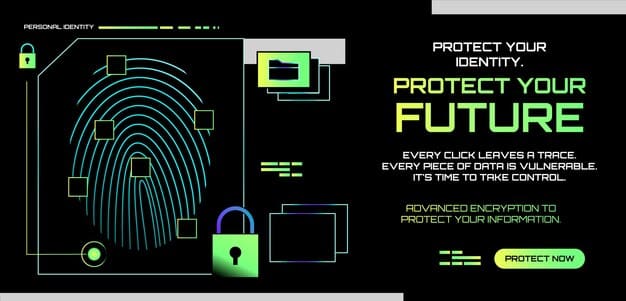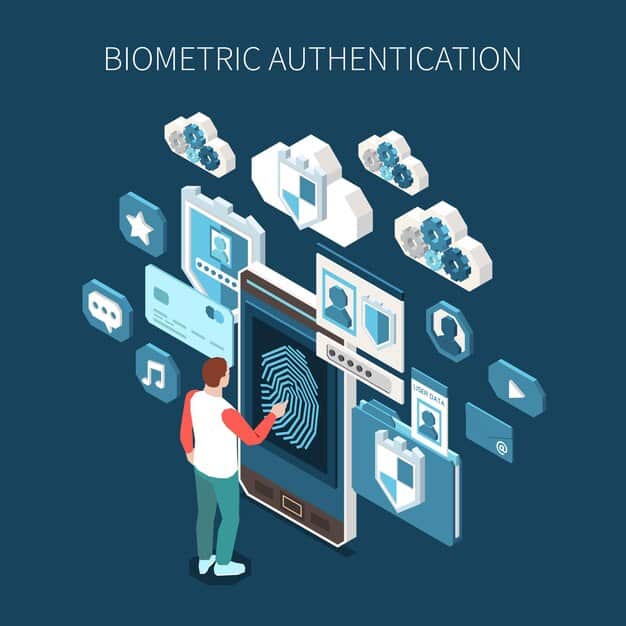Biometric Authentication: Is It Secure Enough for Your Business?

Biometric authentication offers enhanced security over traditional passwords by using unique biological traits, but its security effectiveness for businesses depends on implementation, threat landscape, and complementary measures.
Is biometric authentication: is it secure enough for your business? In today’s digital age, businesses are constantly seeking robust methods to protect sensitive information. Biometrics offer a compelling alternative to traditional passwords, but are they truly secure enough?
Understanding Biometric Authentication
Biometric authentication is a security process that relies on unique biological characteristics to verify a person’s identity. These characteristics can range from fingerprints to facial features and even behavioral traits.
Types of Biometric Authentication
Several types of biometric authentication methods are available, each with its own strengths and weaknesses.
- Fingerprint Scanning: One of the most common and widely used methods, fingerprint scanning involves capturing and analyzing the unique patterns on a person’s fingertip.
- Facial Recognition: This method uses algorithms to identify and verify individuals based on their facial features.
- Iris Scanning: Iris scanning is considered highly secure. It scans the complex, unique patterns in the iris of the eye.
These methods collectively contribute to a layered security approach. Each utilizes different physical traits to fortify authentication processes.
Advantages of Biometric Authentication
Biometric authentication offers numerous advantages over traditional password-based systems, significantly enhancing security and user experience.
Enhanced Security
Biometrics provide a higher level of security compared to passwords. They are more difficult to forge or steal, reducing the risk of unauthorized access to sensitive systems and data.
Convenience and User Experience
Biometric authentication streamlines the login process, eliminating the need for users to remember complex passwords. This results in a more convenient and efficient user experience, reducing frustration and saving time.

Potential Vulnerabilities and Risks
Despite its many advantages, biometric authentication is not without its vulnerabilities. Understanding these risks is crucial for businesses considering implementing biometric systems.
Spoofing and Impersonation
Biometric systems can be vulnerable to spoofing attacks, where malicious actors use fake fingerprints, photos, or videos to impersonate legitimate users and gain unauthorized access.
Data Security and Privacy Concerns
Biometric data, such as fingerprints and facial scans, is highly sensitive. Storage and handling of this data raise significant privacy concerns. Breaches can lead to identity theft and other serious consequences.
- Data breaches: Compromised biometric data can be used for malicious purposes.
- Privacy regulations: Compliance with GDPR, CCPA, and other privacy laws is crucial.
- Secure storage: Implementing robust encryption and security measures is vital for protecting biometric data.
Implementing Biometric Authentication Securely
To effectively leverage biometric authentication, businesses must implement it with careful consideration and robust security measures.
Multi-Factor Authentication (MFA)
Combining biometric authentication with other security methods, such as one-time passwords or security tokens, provides a multi-layered defense against unauthorized access.
Regular Security Audits and Updates
Regularly assessing the security of biometric systems and applying timely updates can mitigate vulnerabilities and ensure ongoing protection against evolving threats.

Future Trends in Biometric Authentication
The field of biometric authentication is continually evolving, with new technologies and applications emerging regularly. Staying informed about these trends is essential for maintaining a competitive edge in security.
Advancements in Biometric Technology
Developments in artificial intelligence, machine learning, and sensor technology are enhancing the accuracy and reliability of biometric authentication methods. These advancements improve security and user experience.
Biometrics are expected to become more deeply integrated into emerging technologies, strengthening digital identities and reducing fraud.
Behavioral Biometrics
Behavioral biometrics analyzes unique patterns in how individuals interact with devices, such as typing speed and mouse movements. This approach offers continuous authentication, enhancing security without adding inconvenience.
Continuous authentication adapts to the user’s behavior, reducing the risk of unauthorized access even after initial verification.
Case Studies: Biometric Authentication in Business
Real-world examples of how businesses are using biometric authentication can provide valuable insights and best practices for implementation.
Financial Institutions
Banks and other financial institutions are increasingly using biometric authentication for secure mobile banking, ATM access, and fraud prevention. This helps ensure the integrity of financial transactions and protect customer accounts.
Healthcare Providers
Healthcare providers use biometric authentication to secure electronic health records, patient identification, and access to controlled substances. This protects patient privacy and prevents unauthorized access to sensitive medical information.
| Key Aspect | Brief Description |
|---|---|
| 🔒 Enhanced Security | Biometrics add a layer of difficulty against unauthorized access. |
| 👍 User Convenience | Eliminates the need for passwords, streamlining the login process. |
| 🛡️ Vulnerability Mitigation | Regular audits and updates help counteract spoofing and data breaches. |
| 📈 Future Trends | Advances in AI and behavioral biometrics improve accuracy and security. |
Frequently Asked Questions (FAQ)
▼
No, no security system is entirely foolproof. Biometric systems can be vulnerable to spoofing and other attacks. Combining biometrics with other security measures can reduce risk.
▼
Secure storage involves encryption and secure servers. Compliance with data protection regulations is essential for maintaining data integrity and privacy.
▼
Privacy implications include the potential for biometric data to be misused if compromised. Data minimization practices and robust security protocols are critical for minimizing privacy risks.
▼
Yes, biometric data can be hacked if the storage systems are not adequately protected. Regular security audits and proactive measures are essential for preventing data breaches.
▼
Financial, healthcare, and government institutions can benefit significantly due to the high security and compliance requirements. Any business handling sensitive data can benefit from enhanced security measures.
Conclusion
In conclusion, biometric authentication offers substantial security and convenience for businesses. However, it’s essential to recognize its limitations and implement it with robust security measures and multi-factor authentication to mitigate potential vulnerabilities.





